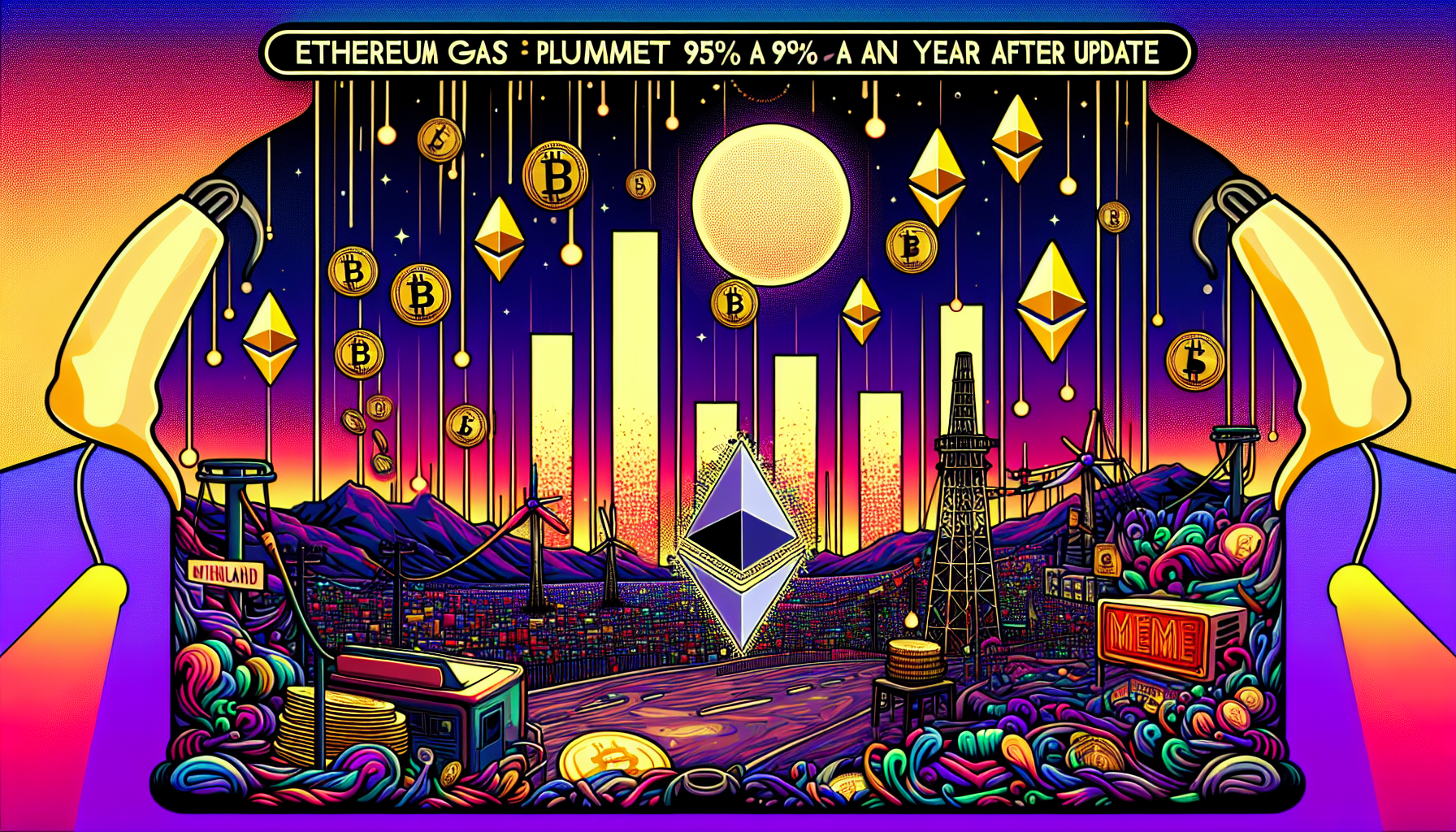 Ethereum’s gas fees have taken a nosedive, dropping by a staggering 95% just one year after the game-changing Dencun upgrade. This monumental shift in the Ethereum network has crypto enthusiasts buzzing with excitement.
Ethereum’s gas fees have taken a nosedive, dropping by a staggering 95% just one year after the game-changing Dencun upgrade. This monumental shift in the Ethereum network has crypto enthusiasts buzzing with excitement.
Back on March 13, 2024, Ethereum unleashed the Dencun upgrade, a fusion of the Cancun upgrade on the execution layer and the Deneb upgrade on the consensus layer. This powerhouse combo introduced nine Ethereum Improvement Proposals (EIPs) designed to supercharge Ethereum’s scalability and slash transaction costs for layer-2 networks. Fast forward to today, and YCharts data reveals that Ethereum’s average gas fee has plummeted from 72 gwei in 2024 to a mere 2.7 gwei as of March 12, 2025.
Just a year ago, swapping tokens would set users back $86 in fees, while non-fungible token (NFT) sales averaged a hefty $145 in gas costs. But now, Etherscan data shows that an average swap costs just $0.39, and an NFT sale is a bargain at $0.65. The crypto community is rejoicing over these newfound savings.
But hold your horses! Despite this dramatic drop in gas fees, Ether (ETH) itself has seen a price decline of 53% since the Dencun upgrade. Back in March 2024, ETH was riding high at over $4,070. Fast forward to March 13, 2025, and it’s valued at around $1,891, according to CoinGecko data.
Dominik Harz, co-founder of hybrid layer-2 Build on Bitcoin (BOB), chimed in with his thoughts. He noted that Ethereum has been “underperforming” lately, pointing out that Monday’s price drop wiped out all DeFi TVL gains since Trump’s election. With Solana’s memecoin frenzy and Ethereum’s recent struggles, the crypto world is on the hunt for a fresh frontier for DeFi.
But wait, there’s more! Ethereum’s next big thing, the Pectra upgrade, hit a few bumps on its final testnet, Sepolia. Error messages and empty blocks were mined, causing some hiccups. Ethereum developer Marius van der Wijden confirmed that a fix was deployed, but an unknown user triggered the same error again. The development team managed to stabilize the testnet and successfully process transactions.
Harz weighed in again, saying that while these testnet issues are “disrupting the mainnet launch,” they’re not Ethereum’s biggest problems. Once Pectra goes live, it promises to double the available data space for layer-2s, reduce costs, and boost execution capacity. However, Harz cautioned that Ethereum is quickly losing its status as the go-to chain for builders, and Pectra isn’t a magic bullet for its deeper issues.
As Ethereum continues to evolve and adapt, the crypto world watches with bated breath. Will Ethereum regain its crown as the king of blockchains? Only time will tell as the network navigates these turbulent waters. Stay tuned for more updates on this thrilling crypto journey!




